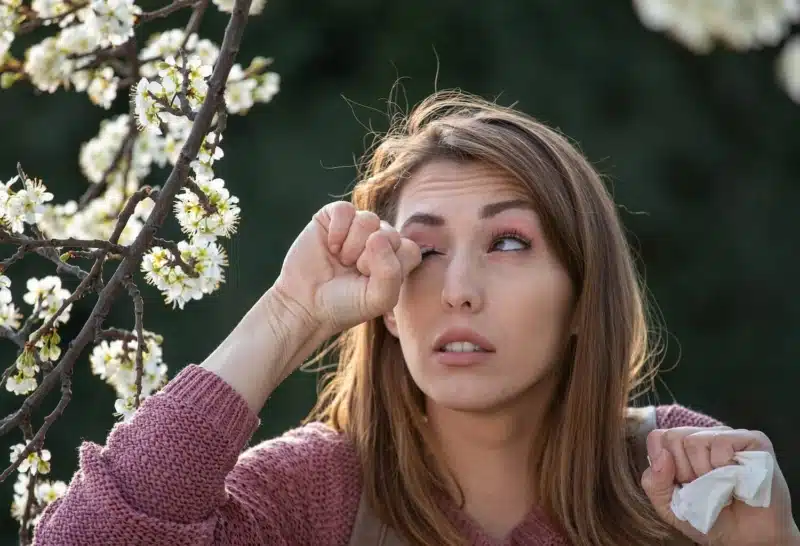
Skin Allergy Testing
This is less invasive than blood tests and is a good alternative for patients who don’t like needles.
learn moreApproximately 20-40% of the population suffers from eye allergies.
*According to Allergic Conjunctivitis, Shad Baab; Patrick H. Le; Eilene E. Kinzer
Condition content was medically reviewed by an AllerVie Health physician in Oct. 2022.
Eye allergies are an allergic response to allergens that travel through the air and then come into contact with the eye.
Another term for eye allergies is allergic conjunctivitis. Allergic conjunctivitis can occur alongside allergic rhinitis (allergic reactions in the nose and upper airway), and together they are often referred to as “hay fever,” or allergic rhinoconjunctivitis.
Triggers
Similar to allergic rhinitis, allergy triggers for allergic conjunctivitis can include pollen, dust, animal, and mold.
Complications
Complications are rare for routine allergic conjunctivitis, but there are some uncommon allergic eye diseases (allergic keratoconjunctivitis and vernal keratoconjunctivitis) that are more serious and should be evaluated by an allergy or eye specialist.
Eye allergy symptoms typically involve both eyes and include:
*Note: that eye pain is NOT a feature of eye allergies and should be evaluated by your primary care provider or an eye doctor as a potentially more serious condition.

The term “conjunctivitis” refers to a condition that causes the thin layer of tissue covering the white front of the eye to become red and swollen.
Many people call conjunctivitis “pink eye.” Pink eye can be brought on by a number of possible triggers. The most common triggers include allergies and infections, like those caused by bacteria and viruses.
Visit an allergy specialist if you’re unsure if you have pink eye from allergies.
Pollen
Dust Mites
(contained in dust)
Pet Dander
Mold
*Note: Eye allergies can also be triggered by chemicals in contact solution, perfumes, cosmetics or drugs.
One of our allergy experts will be able to diagnose your eye allergies and talk to you about any other allergy symptoms you might be having.
When you meet your allergist, be prepared to talk about the following:
An allergy specialist will evaluate you for possible eye allergies using the following:

Skin Allergy Testing
This is less invasive than blood tests and is a good alternative for patients who don’t like needles.
learn more
Blood Testing for Allergies
Blood tests can tell if someone has allergies by finding antibodies in the blood that react to allergens.
learn more
Allergy Shots
Allergy shots are administered on a regular basis exposing the body to a little amount of an allergen to establish immunity.
learn more
Immunotherapy
Immunotherapy is an ideal choice for patients with severe allergies or those unable to avoid exposure to an allergen.
learn moreAt-home treatments to ease eye allergies and limit exposure to eye allergens include:

Allergy medications used for allergic rhinitis, like oral antihistamines and nasal steroids, can sometimes be effective for eye allergies.
However, if the primary allergy symptoms involve the eye (vs nose/sinuses), allergy eye drops are most likely to provide the best relief.
Note also that immunotherapy (allergy shots) is also known to provide benefit for both allergic rhinitis and allergic conjunctivitis.
For more information on immunotherapy as a possible treatment for your allergic conjunctivitis, consult with an allergy specialist.